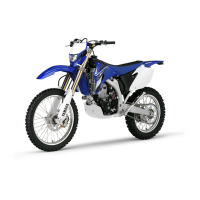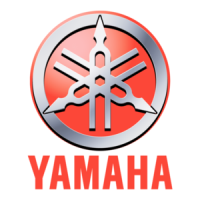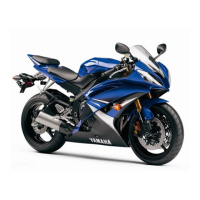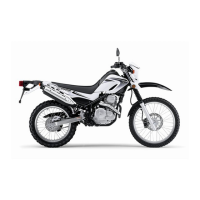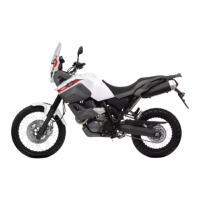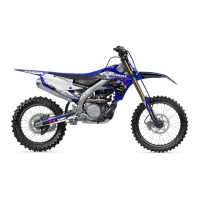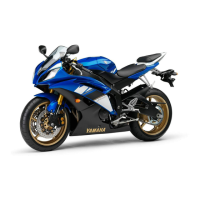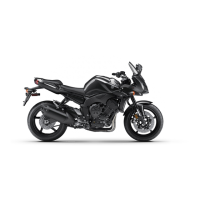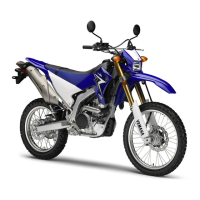
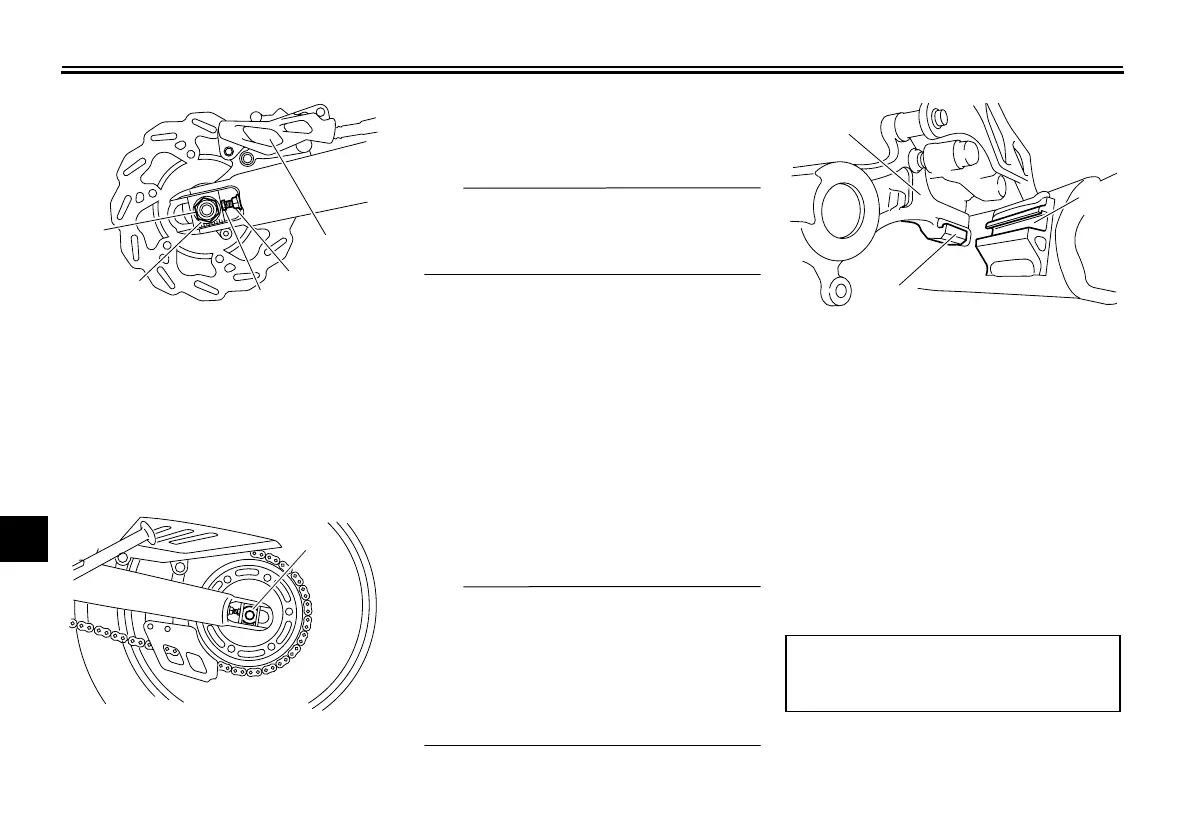 Loading...
Loading...
Do you have a question about the Yamaha 2008 WR250X and is the answer not in the manual?
| Displacement | 250cc |
|---|---|
| Bore x Stroke | 77.0mm x 53.6mm |
| Compression Ratio | 11.8:1 |
| Fuel System | Fuel Injection |
| Transmission | 5-speed |
| Final Drive | Chain |
| Front Brake | 298mm hydraulic disc |
| Rear Brake | 230mm hydraulic disc |
| Front Tire | 110/70-17 |
| Rear Tire | 140/70-17 |
| Seat Height | 35.2 in |
| Fuel Capacity | 2.0 gal |
| Wet Weight | 298 lb |
| Ignition | TCI |
| Engine Type | Liquid-cooled, 4-stroke, DOHC, 4-valve |
| Rear Suspension | Single shock; adjustable preload and rebound damping |
Explains the importance and location of various labels on the vehicle, including fuel and tire information.
Outlines the owner's role in safe operation and essential riding techniques.
Details protective gear and warnings for carbon monoxide and fuel hazards.
Guidelines for adding cargo, accessories, and aftermarket parts safely.
Identifies major parts of the motorcycle from left and right views.
Locates and identifies key controls and dashboard instruments.
Explains the main switch, warning lights, and multi-function display.
Details handlebar switches, levers, pedals, and basic adjustments.
Covers fuel system, catalytic converter, seat, helmet holder, EXUP, and sidestand.
Guides on adjusting front fork, shock absorber, and checking steering.
Steps to check fuel, engine oil, coolant, and brake fluid levels.
Procedures for checking clutch, drive chain, wheels, and tires.
Checks for chassis fasteners, lights, instruments, and sidestand switch.
Instructions for starting the engine and proper gear shifting.
Tips for reducing fuel consumption and engine break-in guidelines.
Safe practices for parking the motorcycle and related warnings.
Overview of maintenance intervals, charts, and the owner's tool kit.
Maintenance tasks for engine oil, air filter, spark plug, drive chain, and fuel system.
Service procedures for brakes, suspension, wheels, tires, and bearings.
Maintenance for chassis fasteners, steering, battery, fuses, lights, and sidestand.
Diagnostic guides for common starting problems and poor engine performance.
Steps to diagnose and address engine overheating issues.
Instructions for cleaning, washing, and protecting the motorcycle's finish.
Procedures for short-term and long-term storage to preserve the vehicle.
Comprehensive data on dimensions, engine, fuel, chassis, and electrical systems.
Details on VIN, key numbers, and model label for identification.
Information regarding noise control systems and legal compliance.
